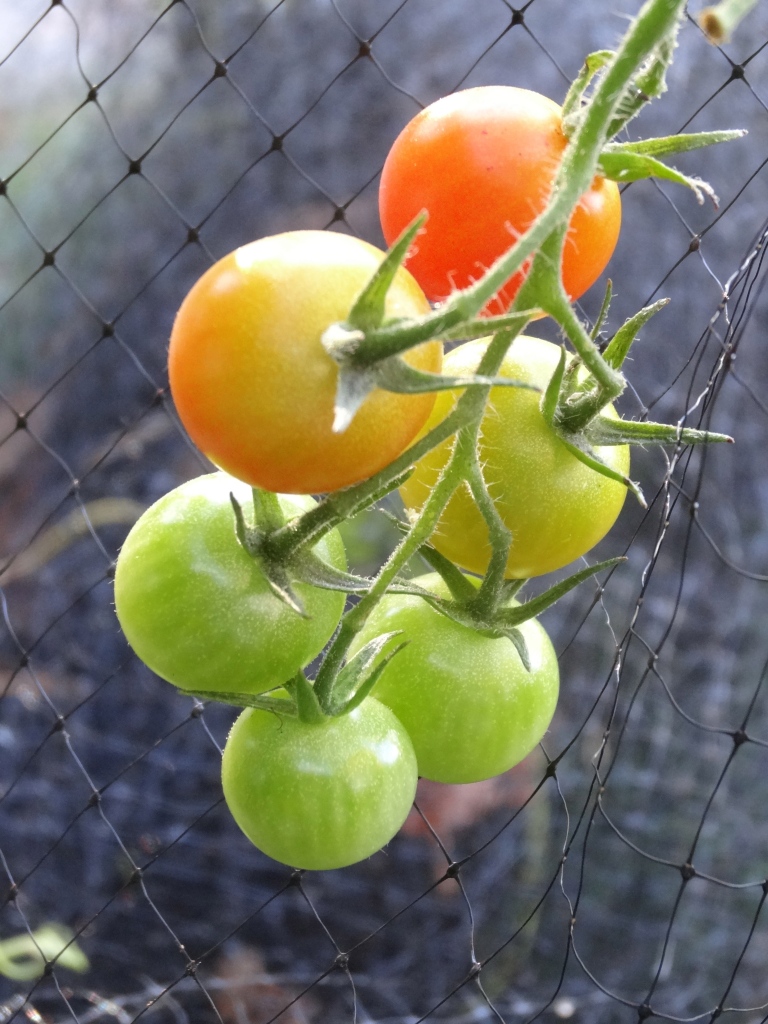
Late summer and early fall are very exciting times for chefs. Summer heat is winding down, the colors of autumn are beginning to highlight trees and plants, and gardens are presenting kitchens with some of the most dynamic fruits and vegetables to grace restaurant menus. Over the next few weeks – Harvest America Cues will highlight five of those ingredients that offer robust flavor, loads of versatility, and a seasonal presence that can change the focus of a chef’s menu.
We will take a deep dive into the world of tomatoes, potatoes, corn, apples, and root vegetables like parsnips, carrots, and beets. Although best when harvested and used immediately, many of these fall gifts are able to store well either under refrigeration or canned for later use. First up – the mighty tomato.
Growing up in the 50’s and 60’s the tomato was a fruit (yes, a fruit) that was easy to identify. A tomato was round and somewhat red, off the vine, uniform, often mealy and typically tasteless. I still loved tomatoes and found them to be a welcome addition to salads, burgers, and even part of those grilled cheese sandwiches with American slices (cheese food), layered between two slices of Wonder bread. Those were the days before we “discovered “(re-discovered) great tomatoes, real cheese, and whole grain rustic breads. Oh, how things have changed and how wonderful that transition has been.
It wasn’t until much later in life, still before I entertained a career in the kitchen, that I was exposed to the real thing. I still remember that first fresh, ripe tomato picked from the farmer’s vine in the middle of July. The sun had warmed the fruit that was nearly bursting with luscious seeds and drenched with moisture and flavor – flavor that I had not experienced before. I took a bite of that warm tomato, just as I would from a fall apple and was amazed at the powerful flavor as the seeds dripped down my chin and the full intensity of Mother Nature’s gift was firmly entrenched in my sub-conscious. Whoa, that was incredible! From that point on, my absolute favorite summer sandwich was (and still is) a fresh, sun warmed tomato, sliced thick and sandwiched between two slices of wheat toast with ample amounts of mayonnaise, sprinkled with pepper and salt. Just writing about it now makes me hungry. Later, of course, I changed the bread to a rustic, crusty sourdough, that beefsteak tomato to an heirloom varietal like a dark Cherokee, sea salt, and fresh cracked pepper – and sometimes a handful of fresh basil leaves as well.
The mighty tomato is an absolute thing of beauty and a gift from late summer harvest. We now understand that there are hundreds, maybe thousands of heirloom varieties from the tiny grape and pear tomatoes to San Marzano (great for canning and sauce), to Brandywines, Ribbed varieties, and those incredible Cherokee’s. From simple seeds nurtured in rich potting soil during the early spring, to robust plants with fruit that is too heavy to be held up to the sun without some support, the tomato comes to life from seed to bud, to green pearl, and with the right amount of care, water, and sunlight – grows to a fruit beyond compare.
As a chef, the tomato, if truly appreciated, can serve as a supporting character or a centerpiece on late summer menus. For that window of time, a chef can push aside those somewhat tasteless, uniform tomatoes that have become a boring commodity, and feature the breadth of heirloom varieties that come from local farmers. Wonderful tomato tarts with fresh ricotta and pignoli crust as an appetizer, the classic Caprese salad with tomato, fresh mozzarella or burrata, basil, virgin olive oil and aged balsamic; a truly fresh marinara made with fruit that was picked a day or two before; baked tomatoes as an entrée side, a Salsa Fresca to flavor those simple tortilla chips and guacamole, or sauteed grape tomatoes to add sharpness to ratatouille. The options are only limited by the chef’s creativity.
Yes, it takes more effort, certainly the process of bringing these ingredients to your kitchen requires far more communication with farmers than it does to place an order with a large box vendor, but the benefits for the guest are worth the extra work. When we work with Mother Nature and do our best to celebrate the seasonality of the ingredients that we work with, our menus sing, our cooks learn to take on the role of caretaker, and the guest is thrilled with the results.
Hold a tomato in your hand and know the care and passion of the farmer, relish the work of the summer sun, enjoy the hard work of the soil that fed the plant, and know that our job as chefs and cooks is less about manipulation and far more about celebrating the flavors that we are given to work with. Tomatoes deserve to be warmed by the sun, not chilled into submission. Tomatoes have earned our respect and as such must be handled with care as a sign of respect for the farmer’s work. Give tomatoes a chance to stand up as the leading character on your menu – give them their day in the spotlight; it will be 11 more months before you will have another opportunity.
For these few short weeks, we have a unique chance to participate in a seasonal ritual – a ritual of celebration just as important as that of the grape ready for harvest, the apple ready to drop from the tree, or corn at the peak of its sweetness. This is the time to celebrate the tomato.
PLAN BETTER – TRAIN HARDER
Celebrate the Tomato
Harvest America Ventures, LLC
Restaurant Consulting
www.harvestamericacues.com BLOG
CAFÉ Talks Podcast

Leave a comment